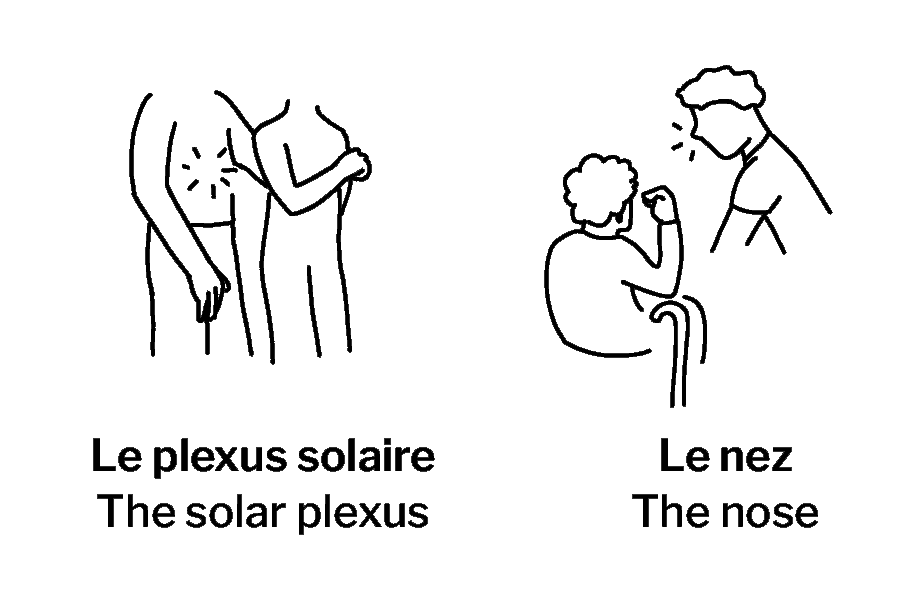
Women tell their stories is a project developed by women, for women, to inspire us with stories of women and girls who have fought back against assault, harassment, discrimination, domestic violence, rape, stalking, and other types of violence. The assault prevention strategies presented here are based on the Action Self-defense course for women given by the Montreal Assault Prevention Centre
The strategies these women have used are not complicated, and they are not magic:
Fighting back really works!
The stories were told to us by the women who experienced them (all names have been changed). Most of these women had never taken a self-defence class when they were able to get out of these difficult situations, but they trusted their instincts and fought back.
An assault can be physical: being grabbed, held, pushed, slapped or hit. It can also be sexual, such as any unwanted touches, kisses or other sexual activity. And it can be verbal or psychological. Some examples of verbal assault are insults, yelling, put-downs, racist comments, blackmail, offensive jokes…there are too many to name. A psychological assault could be neglect, isolating you by insulting your friends and family, convincing you that you are stupid, weak, helpless, etc.
In these stories, we define an assault as any UNWANTED act that makes us feel uncomfortable or afraid. It could be touches, comments, intimidating looks or words, as well as, of course, unconsented sexual acts or actual physical harm.
If I don’t want to be touched, and the other person does it anyway, that’s an assault!
You may find yourself reading a story in this book and thinking, “That’s what I should have done!” Most women have experienced some kind of assault: a creepy look or touch, a flasher, neglect or abuse in the family, domestic violence, right up to incest, rape and physical assault. Some of us have been assaulted several times.
If you have been assaulted, it was not your fault. The other person is responsible; he or she chose to hurt you.
Talking about your assault can be very helpful. Most cities and regions have a woman’s centre, a sexual assault centre, shelters for women and children who escaped domestic violence, and other resources, including telephone help lines. These can be found in Resources.
Maybe you had no idea how to react in the situation; but the truth of the matter is that you did the best you could, with the information you had.
We are not usually taught how to defend ourselves!
Hopefully these stories will help you react differently if it ever happens again. Every woman who reads them probably has her own success stories.
CHANCES ARE YOU DID SOMETHING TO FIGHT BACK, AND YOU DON’T EVEN REALISE IT!
Most advice about protecting yourself as a woman (or as a child) is rules, rules, rules. What not to do, when not to go out, where not to go, what not to wear…we call this victim control, because the potential targets of assault are supposed to control their own behaviour by respecting these rules in order to prevent an assault. But that puts the responsibility of the assault on the person being assaulted. Furthermore, it doesn’t teach us what we can do if we ever find ourselves in an unsafe situation.
Empowerment is when we learn skills and strategies to feel safe, and to BE safe, without having to depend on someone else to protect us. It’s all about making our own choices: I can go where I want, talk to whom I want, dress how I want, and choose when I feel safe and what I do about it when I don’t.
There are no rules here! No right or wrong answers, either.
The Child Assault Prevention program (CAP) says; Everyone has the right to be Safe, Strong and Free!
Every country is different, and every situation is different. In Canada, we have the legal right to use Reasonable Force to defend ourselves when we feel threatened. This means we can do what’s necessary to get to safety: what that is will depend on the situation. Not everyone feels comfortable calling the police or going through the legal system, but we still have things we can do!
Fighting back means doing something that helps end an unsafe situation. The aggressor wants to control us; we can fight back by TAKING CONTROL of the situation. This can mean just breathing, talking, walking away, yelling, hitting, running, waiting for a chance to get away, or some combination of these things.
Most of the time, we can stop a dangerous situation or get to safety just by making eye contact, speaking up, making a scene, or leaving. You have probably already done some of these things many times!
Note: We refer to the aggressor as he, for simplicity’s sake. This does not mean that women could never hurt us! But we know that most acts of violence against women and children are committed by men.
There are some things that help us fight back:
Intuition
Did you ever have the feeling something wasn’t right? We often have an alarm that goes off when we don’t feel comfortable or safe. Fighting back starts with listening to that alarm!
Element of surprise
The person who is trying to hurt us is expecting a good, quiet victim. When we make noise, say no, run away or hit back, he is going to be very surprised! Usually he doesn’t have a Plan B in mind, so the element of surprise gives us time to get to safety.
Strength against Weakness
Our aggressor may or may not be stronger than us, but our fist is probably a lot stronger than his nose, our heel is stronger than his instep, our knee is stronger than his groin. Our instinct for survival is stronger than his desire to hurt us!
100%
When we fight back, whether it’s by talking, hitting, or walking away, it’s a good idea to do one thing at a time and do it with 100% of our energy or intention. Not like the women in horror movies, who scream, flail their arms, lose their shoes and faint!
Following through
Sometimes fighting back means to keep on going, try one thing after another, repeat ourselves, go to a few different resources for help, move out of our house, go all the way to the Supreme Court…we keep on going until we feel safe.
Eye contact
Looking our aggressor in the eye can be very powerful. It sends a message that we are equal to him, and we are not afraid (even if we are!). Also, it allows us to see what he’s going to do.
Breathing
When we don’t breathe, we can’t think. When we take a deep breath (or a few!), we can calm ourselves, think about what we want to do, focus our energy on getting to safety. Breathing also helps us to use our adrenaline, which can make us a lot stronger than usual.
Waiting
Sometimes we don’t feel we can react right away, so we can breathe, let the situation go along while we actively plan and wait for a chance to get to safety.
We might find ourselves in a situation where we have to hit or kick the aggressor in order to get to safety. We are not trying to beat anyone to a pulp: self-defence means doing enough to get to safety!
Here are some tools to help us fight back physically:
Body weapons: There are lots of ways to use our body for self-defence. This is better than carrying a weapon, because our body is always with us. Here are some useful body weapons: your elbow; your knee; your heel; your fist; your voice; your head. A wheelchair or a wooden cane can also be a weapon.
Targets: Using our strength against his weakness means hitting a target: a place on his body that will hurt him a lot, enough for us to have time to get to safety. Some targets are: the nose; the knees; the shins; the top of the foot; the solar plexus (in between the ribs), and the testicles. In most situations, there will be at least one target we can reach.
Following through: Following through doesn’t only mean going all the way with our defence. It also means going through the target when we hit, like you would in tennis or baseball. We aim for a point that is behind the target.
There are no rules for fighting back! We do what we feel we need to do to get to safety!












